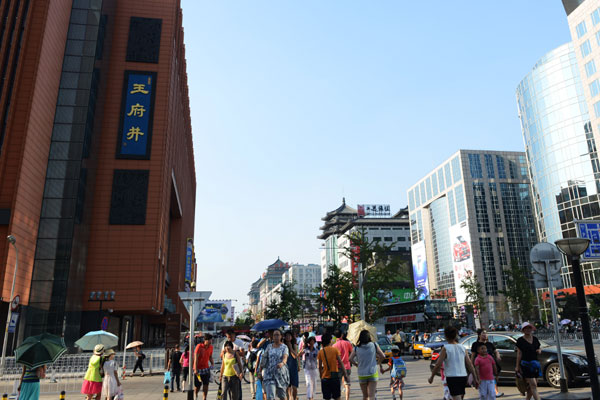 |
|
A view of Wangfujing, one of the prime retail areas in Beijing. China is facing an oversupply in the retail property markets in major cities, and a peak of new supply with more than 20 million square meters will flood the market this year. for CHINA DAILY |
China is facing an oversupply in the retail property markets in major cities, where a surplus of space is outstripping demand from urban residents and an expanding middle class, according to a new report.
Despite a rapid growth in retail sales, less-experienced developers could soon be learning a hard lesson from a market with a supply glut, says a retail property trend report released by Cushman & Wakefield, the world's largest privately held real estate services company.
The report forecast that the new supply of commercial properties in 30 cities that it monitors will total 75 million square meters, and a peak of new supply with more than 20 million sq m will flood the market this year.
|
 |
|
 |
In Shanghai alone, a further 10 shopping malls, with about 985,100 sq m of space, are expected to open over the coming year, according to data from Savills Plc, a UK-based real estate adviser.
And the Beijing market is expected to experience a third historical peak this year, with 10 projects scheduled to debut, adding retail floor area of 928,000 sq m and enlarging the stock by 10 percent, according to Savills. In addition, 84 percent of the new supply will be in non-prime or suburban markets.
Not only is it oversupplied, but China's retail property market has become increasing polarized, said Theodore Knipfing, director of retailer tenant representation for Asia-Pacific at Cushman & Wakefield.
"Rents in the prime streets and prime malls will continue to rise in the foreseeable future, reflecting strong sales, but a key role of these centers also is creating 'mind share'," he said, referring to the concept of a brand becoming a synonym for its particular product or service.
Alice Law, head of retail at Jones Lang LaSalle, Beijing, a global real estate service firm, said retailers are more eager to lease space in established malls, and landlords at these projects continue to drive market rental growth. As a consequence, small and mid-sized retail developers were less apt to raise rents.
Prime retail areas in Beijing, such as Xidan, Wangfujing and Sanlitun, showed a year-on-year rental growth ranging from 7.2 percent to 16.7 percent, because they remain the most popular destinations for the majority of international and leading domestic retailers, particularly new entrants, Savills data showed.
